Finnish American architect and industrial designer, Eero Saarinen was noted for his neo-futuristic style. He was best known for designing the Washington Dulles International Airport outside Washington, DC and the TWA Flight Center in New York City.
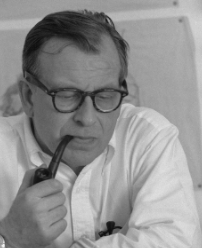
Image source: https://www.futureartdesign.com/designers/eero-saarinen
What Are The Most Important Events In His Life?
He was born in 1910 in Finland. Son of the architect Eliel Saarinen, he emigrated to the US with his family in 1923. In 1934, he graduated from Yale University and thanks to a Yale scholarship, he traveled to Europe again but he returned to the US in 1936 to work at his father’s architectural practice. Indeed, he perfected at the Cranbrook Institute of Architecture and Design of which his father was a director. Here, Eero Saarinen met Charles Eames in the late 1930s. Experimenting with Charles Eames, he co-developed new furniture forms and the first designs for furniture of molded laminated wood. In 1940, they both took part in the “Organic design in Home Furnishings” competition mounted by the Museum of Modern Art in New York (MoMA). While Charles Eames continued to work on molded furniture in plywood, the Finnish architect decided to work on other materials.
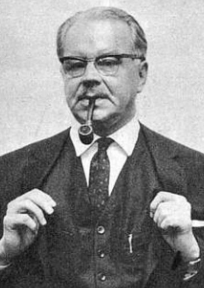
Image source: https://jenikirbyhistory.getarchive.net/amp/media/eero-petajaniemi-7906f8
Eero launched his own architectural practice after his father’s death, and in the ensuing decade produced a flood of important buildings and interior projects, establishing him on his own firmly within the canon of great modern architects. He loved models, especially large ones into which he could stick his own head in order to visualize the interior space, and numerous photographs exist showing him and his employees inspecting or constructing them. In August 1961, Saarinen complained of headaches as he was preparing for his firm to move from Detroit to New Haven, Connecticut, and checked himself into a Michigan hospital to seek a quick remedy. Doctors discovered instead that he had a brain tumor, and Saarinen elected to undergo an operation that promised a very slim chance of survival. He died during surgery, having turned 51 just a week and half earlier.
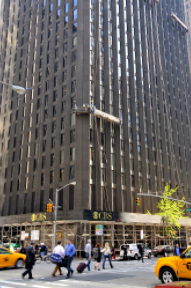
Image source: https://search.creativecommons.org/photos/003bf048-0140-42d5-9a11-82ef2d4381db by FaceMePLS
What Are His Most Successful Works?
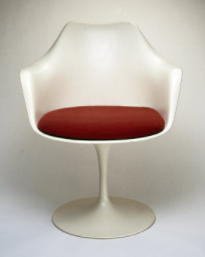
Image source: https://search.creativecommons.org/photos/e3a834d6-67ce-44a5-b00b-6e7db97721a8 by Eero Saarinen
His enormous success is certainly linked to the Knoll company for which he realized the “Womb” chair, and his most famous group “Tulip” or “Pedestal”, which incorporated inside it armchairs, chairs, dining tables, tables, stools.
- The Womb chair
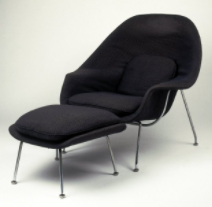
In 1948, Eero Saarinen designed the “Womb” collection, which was supposed, as the name suggests, to make those seated on it feel as secure and cozy as a fetus in the womb. He created a womblike chair using a glass fibre shell upholstered in foam rubber and fabric. The Womb Chair came to be when Eero was asked by Florence Bassett Knoll to create a chair she could curl up in. She wanted it to be shaped like a basket, large enough for lots of pillows, and one she could sink into to read a book. The Womb chair is designed to facilitate a relaxed sitting posture, providing emotional comfort and a sense of security-hence, the name “Womb.” The seat fits perfectly in both a modern and classic, industrial or minimal style. Its wide range of colors makes it possible to satisfy the various tastes while maintaining the unmistakable design that has made it an absolutely modern style icon. The Womb chair displays the Finnish-born designer’s flair for challenging rules, breaking molds and setting new standards for modern design.
About Saarinen’s Style

Image source: https://search.creativecommons.org/photos/159d9a45-cffd-4415-942c-68f9e41e529e by Kai Brinker
Saarinen’s style follows rational and pure concepts but it is always incorporated to the search for innovative and revolutionary materials. His research, in fact, is not limited to the study of design but intends to improve people’s habits, improving their quality of life. His own work included a series of dramatically different designs that displayed a richer and more different vocabulary. In questioning the presuppositions of early modern architecture, he introduced sculptural forms that were rich in architectural character and visual drama unknown in earlier years. The exciting results were welcomed by many who were bored by the uniformity and austerity of the International Style of modern architecture.

Image source: https://search.creativecommons.org/photos/e884e182-ef78-4626-8650-749d2a2a5fed by Arch_Sam
Saarinen was considered to be part of the second generation of the modern movement within architecture. Like many contemporary architects, Saarinen was challenged by furniture design, especially the chairs, which presents aesthetical and structural problems that are particularly difficult to solve. The focus of his design practice was on utilizing new construction techniques as well as creating architecture which contained variety and visual effect. By the time of his death, Saarinen did not have a distinct architectural style, despite helping to bring modern architecture to mainstream America. Many of his publication proclaimed Saarinen to be the most influential architect of his era. He designed mostly with steel, glass and concrete. He enjoyed the concept of exposing the structure of the building with steel.
Info source:
https://www.britannica.com/biography/Eero-Saarinen
https://www.theartstory.org/artist-saarinen-eero-life-and-legacy.htm
http://www.sheilazellerinteriors.com/articles/eero-saarinens-womb-chair-model-no-70
